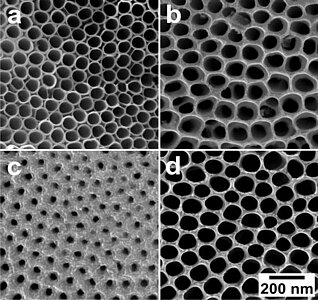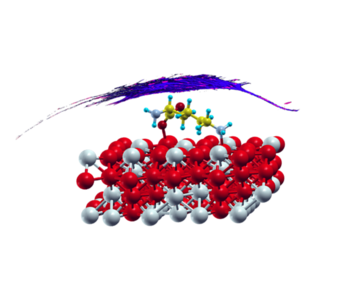Surfaces and nanoobjects that interact with biological cells and tissues are in the center of focus of this research area – with the aim of inducing a stimulation, controlling or enabling the characterization for diagnosis and therapy. While the physics of cell-surface interactions is studied and optimized using experiments and modeling, transfer to application also plays a key role.



Expertise
- Titania nanotube arrays for organotypic long-term culturing of tissues
- Ferromagnetic shape memory alloys for biomedical applications
- Plasma assisted inert gas condensation for custom multicomponent nanoparticle synthesis
- Bioactive coatings and substrates
Highlights
Tailoring Substrates for Long-Term Organotypic Culture of Adult Neuronal Tissue
V. Dallacasagrande, M. Zink, S. Huth, A. Jakob, M. Müller, A. Reichenbach, J. A. Käs, S. G. Mayr
Adv. Mat. 24 (2012) 2398. Featured on cover page of Adv. Mat.
https://doi.org/10.1002/adma.201200816Mit Hilfe von maßgeschneiderten TiO2-Nanoröhrchen-Substraten gelingt es, neuronales Gewebe über Wochen organotypisch zu kultivieren und intakt zu erhalten.
Interaction of Ferromagnetic Shape Memory Alloys and RGD Peptides for Mechanical Coupling to Cells: from Ab Initio Calculations to Cell Studies
M. Zink, F. Szillat, U. Allenstein, S. G. Mayr
Adv. Func. Mat. 23 (2013) 1383
https://doi.org/10.1002/adfm.201201789Die Wechselwirkung von Zellen mit metallischen magnetischen Formgedächtnismaterialschichten wird maßgeblich von Proteinen an der Grenzfläche beeinflusst; letztere wird mittels Experimente und dichtefunktionaltheoriebasierten ab-initio-Rechnungen aufgeklärt.
Coupling of Metals and Biominerals: Characterizing the Interface between Ferromagnetic Shape-Memory Alloys and Hydroxyapatite
U. Allenstein, S. Selle, M. Tadsen, C. Patzig, T. Hoeche, M. Zink, S. G. Mayr
ACS Applied Materials & Interfaces 7 (2015) 15331-15338
DOI: 10.1021/acsami.5b03189Ferromagnetic shape memory alloys constitute magnetic-mechanic transducers, that reveal the potential for magnetic actuation - besides their conventional shape memory behavior, including superelasticity. They are therefore highly promising candidates for implants in the area of bone repair with additional potential for magnetic stimulation. With this background the present publication addresses adhesion of a biocompatible, contact enhancing hydrodxyappatite coating using a combined experimental - ab initio density functional theory based study.
Long-term Tissue Culture of Adult Brain and Spleen Slices on Nanostructured Scaffolds
S. Kallendrusch, F. Merz, I. Bechmann, S. G. Mayr, M. Zink
Advanced Healthcare Materials 6 (2017) 1601336
DOI: 10.1002/adhm.201601336TiO2-Nanoröhrchen-Trägersubstrate ermöglichen die organotypische Langzeitkultivierung von adulten Hirn- und Milz-Schnitten, ohne das Gewebedegeneration eintritt.
Early adhesion of cells to ferromagnetic shape memory alloys functionalized with plasma assembled biomolecules - a single cell force spectroscopy study
M. V. Cakir, U. Allenstein, M. Zink, S. G. Mayr
Materials & Design 158 19 (2018)
https://doi.org/10.1016/j.matdes.2018.08.012Plasmagestützt werden Proteinschichten auf magnetischen Formgedächtnismaterialien abgeschieden, die stark haftend und gleichzeitig hinreichend elastisch sind. Sie ermöglichen eine exzellente Zellankopplung, wie Einzelzellen-Kraftspektroskopie zeigt.
